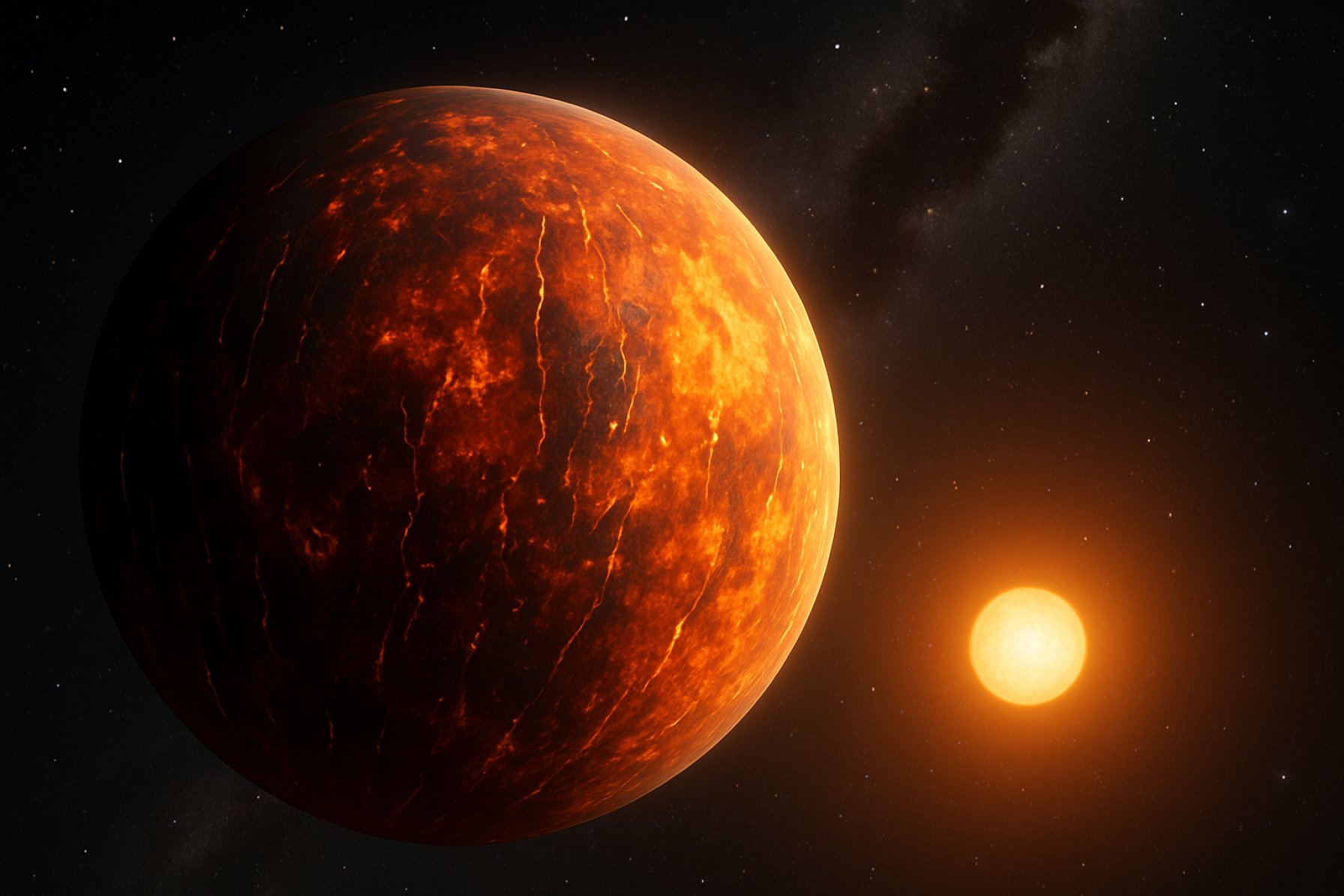Unveiling WASP-121b: The “Hell Planet” With Iron Rain and a Chaotic Past Shocks Scientists in 2025
NASA’s James Webb Space Telescope reveals WASP-121b, a scorched exoplanet with liquid metal rain, wild chemistry, and a dramatic origin.
- Temperature (day side): Over 3,000°C (5,400°F)
- Orbit period: 30 hours (locked, tidally stretched shape)
- Distance: 900 light-years from Earth
- First ever detection of: Silicon monoxide in a planet’s atmosphere
Astronomers using the James Webb Space Telescope (JWST) have exposed the punishing reality of WASP-121b, a planet so extreme it defies almost every known rule of planetary science.
Orbiting a blinding-hot star, this giant world is shaped by gravity into a stretched football, locked in place as one hemisphere faces its star forever. The result? Temperatures soar enough for iron to vaporize and rain—literally—metal onto its surface.
Q: What Makes WASP-121b the Planetary Inferno of 2025?
Its dayside is a vision from science fiction—surfaces hit by a glow fierce enough to melt iron, with skies laden with the vapor of metals and silicates. The “nightside,” permanently turned away from the star, still simmers hotter than a blast furnace here on Earth.
In 2025, two breakthrough studies revealed the deepest secrets of this exoplanet. Powerful instruments aboard JWST isolated water vapor, carbon monoxide, methane, and—stunningly—silicon monoxide in the air, a chemical cocktail telling the story of a world battered, baked, and nearly destroyed.
How Do Astronomers Decode the Violent Past of a Planet Like This?
Researchers used NIRSpec’s infrared technology to examine the planet’s light as it passed in front of and behind its parent star. Every molecule left a signature in the data—like fingerprints at the scene of a planetary crime. For the first time ever, silicon monoxide gas was spotted, hinting at asteroid-sized planetesimals hurling into and being absorbed by the growing giant.
3D models, crafted by teams at the Max Planck Institute for Astronomy, let scientists map how searing winds whip these molecules between the day and night sides, revealing atmospheric flows on a scale never before seen outside our solar system.
Q: Did WASP-121b Always Endure Such Heat?
Evidence shows otherwise. Chemical traces suggest WASP-121b formed far from its star, accumulating icy methane and building its murky, carbon-rich shell in cooler territory akin to where Jupiter and Uranus circle our sun.
But cosmic chaos intervened. Massive gravitational throws—possibly from other planets—forced WASP-121b to spiral inward until it was chained close to its parent star. Now, intense tidal forces threaten to rip it apart while the atmosphere’s chemistry continues to evolve.
How Is Methane Surviving on This Scorched World?
The most surprising clue: On the “cooler” nightside, methane gas appears in unexpected abundance. Since methane should rapidly decompose in searing heat, its presence points to extreme vertical mixing, dragging cooler gases from deep layers up to the upper atmosphere in defiance of known exoplanet models.
Scientists now believe planetary models must adapt to explain such violent, planet-wide mixing—ushering in a new era for understanding gas giants beyond our solar system.
Your Guide to the Latest Cosmic Discoveries
Breakthroughs like this are rapidly expanding our understanding of alien worlds. Stay tuned for updates on the frontiers of astronomy by following trusted sources like NASA, ESA, and Space.com.
Don’t Miss Future Discoveries! Here’s Your Exoplanet News Checklist:
- Bookmark leading astronomy websites for breaking news.
- Subscribe to official JWST and NASA updates.
- Join online space forums for real-time discussions.
- Share the story of WASP-121b—the hottest, wildest planet yet discovered!













